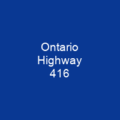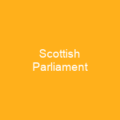Discovering Ottawa: The Capital City of Canada
Ottawa is the capital city of Canada, nestled in southern Ontario at the confluence of the Ottawa River and the Rideau River. With a population of over 1 million people, it forms part of the Ottawa-Gatineau CMA (Census Metropolitan Area) and NCR (National Capital Region). This city is not just any ordinary metropolis; it’s the political heart of Canada, housing key government buildings and institutions that shape our nation’s destiny.
Founding and Early History
Ottawa was founded as Bytown in 1826. It wasn’t until 1855 that it officially became Ottawa. The city’s name comes from the Algonquin word ‘adawe,’ meaning “to trade.” Colonel By, a British military engineer, set up military barracks on what is now Parliament Hill and established two neighborhoods: Upper Town for English-speaking Protestants and Lower Town for French, Irish, and Catholics.
Political Significance
The selection of Ottawa as the capital was no easy feat. Initially, Kingston was chosen but ultimately rejected due to its defensible location and political compromise between English-speaking and French-speaking populations. The city’s strategic water transportation access via the Ottawa River and Rideau Waterway, a modern all-season railway in 1854, and government ownership of land that became Parliament Hill were other key factors.
Architecture and Urban Development
The skyline of Ottawa is a blend of formal and functional styles. The original Parliament buildings, constructed between 1859 and 1866 in the Gothic Revival style, stand as testaments to the city’s rich history. The Library of Parliament and landscaping were completed in 1876, adding to its grandeur.
Modern Developments
The 20th century saw significant growth and development in Ottawa. The Hull-Ottawa fire of 1900 destroyed much of the city, but it was rebuilt with new landmarks like the Château Laurier hotel and Union Station opening in 1912. The Centre Block was rebuilt after a fire in 1916, and the Peace Tower was completed in 1922.
Urban Planning
The 1950 Greber Plan transformed Ottawa’s industrial appearance, including the creation of the National Capital Greenbelt and Queensway highway system. The establishment of the National Capital Commission in 1958 marked a permanent political infrastructure for managing the capital region.
Geography and Climate
Ottawa is situated on the south bank of the Ottawa River, containing the mouths of the Rideau River and Rideau Canal. The city’s climate is warm-summer humid continental with four distinct seasons. Summers are generally warm and humid, while winters are dominated by snow and ice.
Neighbourhoods
Ottawa’s core neighbourhoods include Centretown, which is next to downtown, where you can find the parliament precinct, Office of the Prime Minister and Privy Council, Supreme Court of Canada building, and more. Across the Ottawa River lies Gatineau, an amalgamation of former Quebec cities Hull and Aylmer.
Demographics
The city’s population is diverse, with 25.9% immigrants from countries like China, India, UK, Lebanon, Philippines, US, Haiti, Syria, Vietnam, and Iran. The majority of the population identifies as white or European (64.9%), followed by visible minorities (32.5%). Christianity remains the largest religion, but there is a growing diversity in beliefs.
Economy
Ottawa’s economy is driven by its status as Canada’s political capital and its thriving high-tech industry. The federal government is Ottawa’s largest employer, with over 116,000 individuals from the National Capital Region working there. The city also hosts the Ceremonial Guard, which attracts tourists who spend approximately $2.2 billion annually.
Tourism and Culture
With an estimated annual tourist count of 22 million people, Ottawa is a major technology hub known as ‘Silicon Valley North.’ The city has become home to many large technology companies like Nortel and Shopify. The health sector employs over 18,000 people, while business, finance, administration, and sales and service are among the top occupations.
Education
Ottawa boasts two main public universities (Carleton University and the University of Ottawa) and two main public colleges. The city is known as the most educated in Canada, with a high proportion of university-educated residents.
Cultural Landmarks
The city hosts several national museums like the Canadian Museum of Nature, National Gallery of Canada, and six other significant cultural institutions. There are 25 National Historic Sites of Canada in Ottawa, many of which have been designated as having ‘heritage elements’ by the City of Ottawa under Part IV of the Ontario Heritage Act.
Government and Politics
The City of Ottawa is governed by a 25-member council consisting of 24 councillors and the mayor. The city hosts 130 embassies, making it a hub for international diplomacy.
Transportation
Ottawa’s public transit system is managed by OC Transpo, which operates an integrated, multi-modal Rapid Transit system consisting of four lines: the O-Train light rail system and a vast bus rapid transit network. The city has two airports: Ottawa Macdonald-Cartier International Airport and Gatineau airport.
Recreational Activities
Ottawa hosts many annual seasonal activities such as Winterlude, Bluesfest, Canadian Tulip Festival, Ottawa Dragon Boat Festival, Fringe Festival, Capital Pride, CityFolk Festival, and others. The city is home to several professional sports teams including the Senators (hockey), Redblacks (Canadian Football), Atlético Ottawa (soccer), Blackjacks (basketball), Titans (baseball), and Charge (women’s hockey).
Conclusion
Ottawa, with its rich history, diverse population, and vibrant culture, stands as a beacon of political and technological innovation. From its founding in 1826 to becoming the capital city of Canada, Ottawa has evolved into a dynamic metropolis that continues to shape our nation’s future.

You want to know more about Ottawa?
This page is based on the article Ottawa published in Wikipedia (retrieved on December 17, 2024) and was automatically summarized using artificial intelligence.







